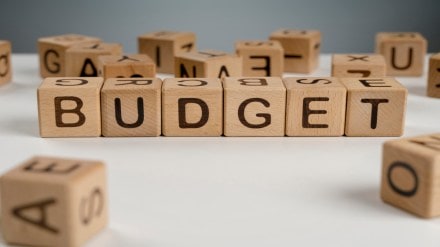Finance Minister Nirmala Sitharaman is expected to table the Union Budget for FY25 on July 23 or 24, sources told FinancialExpress.com. However, there is still no official announcement on the date of the Budget presentation yet. The finance minister had, earlier on February 1, 2024, presented the interim budget in the Parliament. This means, India will witness two Budget presentations this year. So, what is the difference between Union Budget and an Interim Budget and what is the relevance of both?
In essence, the distinction between the interim budget and full-year budget lies in their scope, duration, and purpose. While the interim budget is presented by an incumbent government and acts as a temporary measure to meet immediate financial needs, the full-year budget encompasses a comprehensive fiscal strategy aimed at driving long-term growth and development. A government cannot present the full budget ahead of the general elections.
What are the key components of a Full-Year Budget?
A full-year budget is a comprehensive financial plan that covers all aspects of government spending, revenue generation, and policy reforms for an entire fiscal year. It is also known as the Annual Financial Statement. According to Article 112 of the Constitution, a statement of the estimated receipts and expenditure of the government for a specific financial year, is laid before both the Houses of Parliament — Rajya Sabha and Lok Sabha. The key components of a full Budget are:
1. Revenue and Expenditure: Union Budget outlines the government’s estimated revenue sources, which includes taxes, duties, and other income streams, along with planned expenditures across sectors such as education, healthcare, infrastructure, and defence.
2. Policy Initiatives: The Budget unveils new policies, schemes, and reforms which are aimed at bolstering economic growth, social development, and overall progress.
3. Parliamentary Scrutiny: The Union Budget, unlike the interim budget, undergoes thorough examination, discussion, and approval by both houses of Parliament. It involves debates on various aspects of the budget, allowing for detailed analysis and possible amendments before approval.
What are the key components of the interim budget?
An interim budget is a temporary financial plan which is presented by the incumbent government ahead of the general elections. It serves as a provisional arrangement to meet the expenditure needs of the government for 3-4 months until a new government can formulate and present a full-fledged budget. An interim budget does not make any major policy announcements which could financially burden the next government that will present the full Union Budget. The key aspects of an interim budget are:
1. Allocation of Expenditure: An interim budget allocates funds for essential government operations, ongoing schemes, and any urgent requirements, required to run the government before the new government takes charge.
2. No Major Policy Announcements: Given its temporary nature, an interim budget does not introduce policy changes or reforms that require long-term planning or financial commitments. The focus remains on maintaining stability and continuity in governance until a new government assumes power.
3. Approval Process: The interim budget does not undergo the usual scrutiny and debate in Parliament. It is presented for a vote-on-account, seeking approval for necessary expenditures.
Here are some of the major announcements made in the Interim Budget:
– 2 crore more homes under PM AWAS yojana
– Housing for middle class
– Rooftop solar power generation for at least 300 units
– Enhancement of target for Lakhpati Didi
– Preparing and Empowering MSME to grow and compete globally
– Attention to the Eastern region (Bihar, Odisha, Jharkhand, West Bengal and Chhattisgarh)
– Next generation reforms to be carried out
– Three major corridors which are programs for railways + 40,000 coaches brought to level of Vande BHarat
– Urbanisation: Looking at metro and NaMo Bharat
– Rs 1 lakh crore corpus for Research and Innovation
– Boost to tourism
